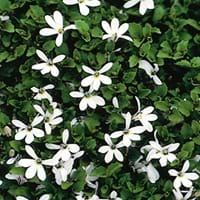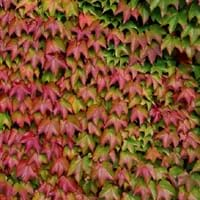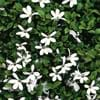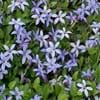Life Span
Perennial
Perennial
Origin
Australia, New Zealand
United States, Mexico
Types
White Star Creeper, 'Alba' Super Star Creeper, 'County Park' Dark Blue Star Creeper, 'Little Star Creeper
Not Available
Number of Varieties
Not Available
Habitat
gardens, gully slopes, Terrestrial, Tropical areas
Deciduous forests
USDA Hardiness Zone
5-8
4-10
Sunset Zone
4, 5, 6, 7, 8, 9, 14, 15, 16, 17, 18, 19, 20, 21, 22, 23, 24
A1, A2, A3, H1, H2, 1a, 1b, 2a, 2b, 3a, 3b, 4, 5, 6, 7, 8, 9, 10, 11, 12, 13, 14, 15, 16, 17, 18, 19, 20, 21, 22, 23, 24
Habit
Mat-forming
Vine/Liana
Flower Color
Light Blue
Ivory
Flower Color Modifier
Bicolor
Bicolor
Fruit Color
Non Fruiting Plant
Not Available
Leaf Color in Spring
Green
Green, Dark Green, Sandy Brown, Burgundy
Leaf Color in Summer
Green
Green, Dark Green, Sandy Brown, Burgundy
Leaf Color in Fall
Green
Green, Dark Green, Sandy Brown, Burgundy
Leaf Color in Winter
Green
Light Green
Leaf Shape
Ovate
Maple shaped
Plant Season
Spring, Summer, Fall
Not Available
Sunlight
Full Sun, Partial Sun, Partial shade
Full Sun, Partial Sun
Growth Rate
Fast
Very Fast
Type of Soil
Clay, Loam
Clay, Loam, Sand
The pH of Soil
Acidic, Neutral, Alkaline
Acidic, Neutral, Alkaline
Soil Drainage
Average
Well drained
Bloom Time
Late Spring, Early Summer, Summer, Late Summer
Summer
Tolerances
Wet Site
Wet Site
Where to Plant?
Container, Ground
Container, Ground
How to Plant?
Divison, Seedlings, Stem Cutting
Root Division, Stem Cutting
Plant Maintenance
Low
Medium
Watering Requirements
Requires watering in the growing season, Use and maintain water-efficient soaker hoses, Water evenly, Water frequently while growing, Water more in summer
Keep the Soil well drained
In Summer
Average Water
Lots of watering
In Spring
Average Water
Moderate
In Winter
Moderate
Average Water
Soil pH
Acidic, Neutral, Alkaline
Neutral
Soil Type
Clay, Loam
Well drained
Soil Drainage Capacity
Average
Well drained
Sun Exposure
Full Sun, Partial Sun, Partial shade
Full Sun, Partial shade
Pruning
Proper mowing practices are necessary, Prune for shortening long shoots, prune to control shape, Remove dead leaves, Remove dead or diseased plant parts
Cut off the flower stalks at the base of the plant, Prune after flowering
Fertilizers
Fertilize when fast growth is desired
10-10-10 diluted liquid fertilizer, High phosphorus
Pests and Diseases
Slugs, Snails
Alternaria Leaf Spot, Blight, Leaf curl
Plant Tolerance
Wet Site
Heat Tolerance, Shade areas
Flowers
Showy
Insignificant
Flower Petal Number
Single
Single
Foliage Texture
Fine
Fine
Foliage Sheen
Glossy
Matte
Attracts
Bees, Birds, Butterflies
Flea beetles, Insects
Allergy
Skin irritation
Skin irritation
Aesthetic Uses
Beautification, Ground Cover, Landscape Designing, Mixed Border, Ornamental use, Used for decorating walls, fences, gates, hedges, etc.
Decorating walls, Showy Purposes
Beauty Benefits
No Beauty Benefits
Acne, Anti-ageing, Good Cleanser
Environmental Uses
Air purification, Indoor Air Purification
Air purification, Very little waste
Medicinal Uses
No Medicinal Use
Not Available
Part of Plant Used
Whole plant
Leaves, Vines
Other Uses
Showy Purposes
Basketary, Showy Purposes, Used as Ornamental plant
Used As Indoor Plant
No
Yes
Used As Outdoor Plant
Yes
Yes
Garden Design
Alpine, Container, Groundcover
Edible, Vegetable
Botanical Name
PRATIA pedunculata
Parthenocissus tricuspidata
Common Name
White Star creeper
Boston Ivy, Japanese creeper, Grape ivy, Japanese ivy, Woodbine
In Hindi
व्हाइट स्टार लता
Boston Ivy
In German
Weißer Stern Kriechgang
Dreispitzige Jungfernrebe, Wilder Wein
In French
Blanc étoiles creeper
Winobluszcz trójklapowy
In Spanish
Blanco enredadera estrella
Boston Ivy
In Greek
Λευκό αναρριχητικό φυτό αστέρων
Boston Ivy
In Portuguese
Branca Baby estrela
Boston Ivy
In Polish
Biała Gwiazda pnącze
Boston Ivy
In Latin
Stella creeper albis,
Boston Ivy
Phylum
Tracheophyta
Magnoliophyta
Class
Magnoliopsida
Magnoliopsida
Order
Not Available
Vitales
Family
Campanulaceae
Vitaceae
Genus
Pratia
Parthenocissus
Clade
Angiosperms
Angiosperms, Eudicots, Rosids
Tribe
Not Available
Not Available
Subfamily
Not Available
Not Available
Number of Species
Not Available




